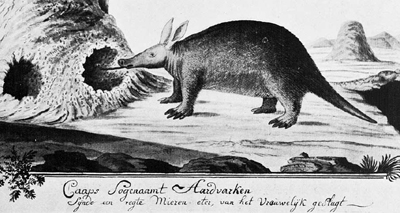Travel reports of sea heroes and adventurers of the 16th and 17th century > The Portugese empire
Expanding trade meant that a new class of rich entrepreneurs and merchants came into being. The money they earned was reinvested in new enterprizes. They regularly lent money to their kings and rulers, who used it to maintain or increase their influence.
It was in the entrepreneurs’ interest to enlarge their trade networks in the newly explored territories. New products for trade or barter, such as spices and sugar, enabled them to meet the increasing demand on the European markets. The Portuguese royal family made agreements with merchants to find new regions for their trade, to map them and finally to bring them under Portuguese rule. Development of the art of cartography and the publication of all sorts of travel reports led to increased knowledge of the world. This newly acquired knowledge about wind directions and sea currents meant that skilled helmsmen could be entrusted with ships of ever greater tonnage. Portuguese ships ventured further from home than ever before.
It remains astonishing that Portugal, a country with barely one million inhabitants at the time and a predominantly agricultural economy, was able to build such an empire between 1400 and 1600. Its size was staggering: it extended from the Maghrib (North Africa) tot Macau (China) and the Matto Grosso (Brazil). The Portuguese royal family played an important role, in particular the Crown Prince Henry the Navigator (1394-1460). He stimulated modernization in shipbuilding and navigation and founded the first European nautical college.

Building what is sometimes called the first ‘modern’ colonial empire began with the conquest of Ceuta in North African in 1415. Madeira (1418), the Azores (1439) and later (1460) the Cape Verde Islands were to follow. In 1497, Vasco da Gama rounded the Cape of Good Hope on the southern tip of the African continent for the first time. It took the Portuguese two further years before they were able to reach India. On the way, they took possession of a part of South America (now Brazil) in the name of the King of Portugal.
In the wake of the Portuguese, other nations started to explore the world as well. Many years later, we find the Dutchman Jan Huygen van Linschoten working in the employ of the bishop of Goa in India. He wrote about the experience and knowledge he gained there in his book Itinerario, which was published in Amsterdam in 1596. The book is a treasure trove of facts and practical information and was a valuable guide for the Dutch on their way to the riches of the Far East.
Dutch commercial expansion began to become a force to be reckoned with at the end of the 16th century. Among the large companies that made their mark at the time, one was active in the western (Atlantic area) and one in the eastern (Asia) hemisphere.
Read on: The Dutch East Indies Company
